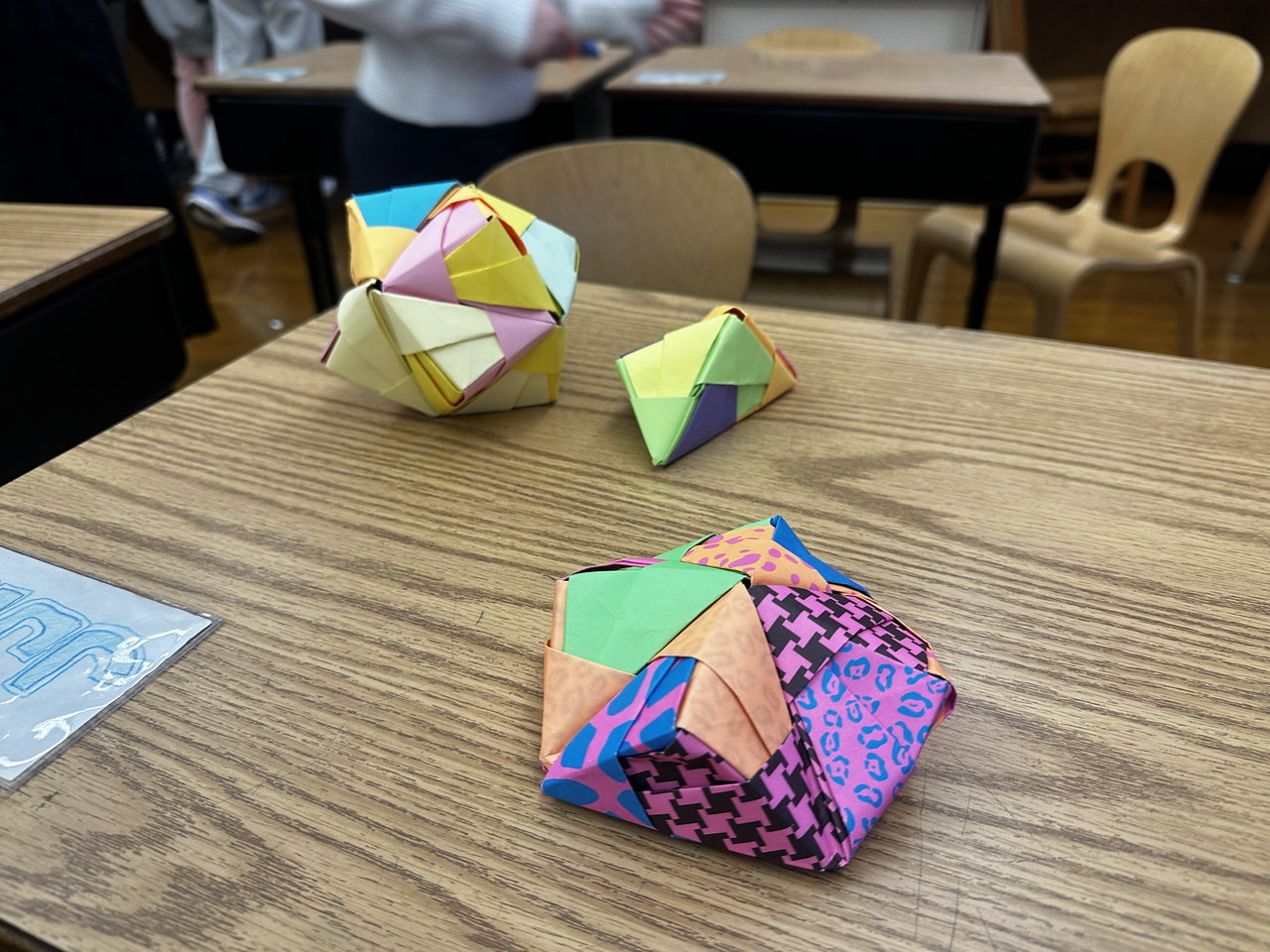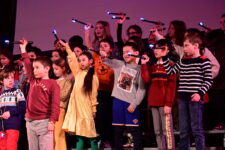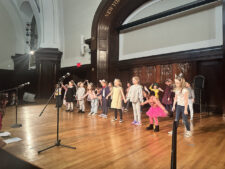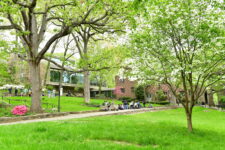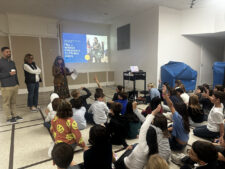On a late Thursday afternoon, there was a palpable excitement in Math Specialist Larry McMillian’s classroom as his 5th Graders eagerly welcomed a group of 2nd Grade students. This particular day’s cross-grade share-out showcased the students’ creativity and analytical skills through complex, meticulously designed origami structures, the product of their work in the Math Club.
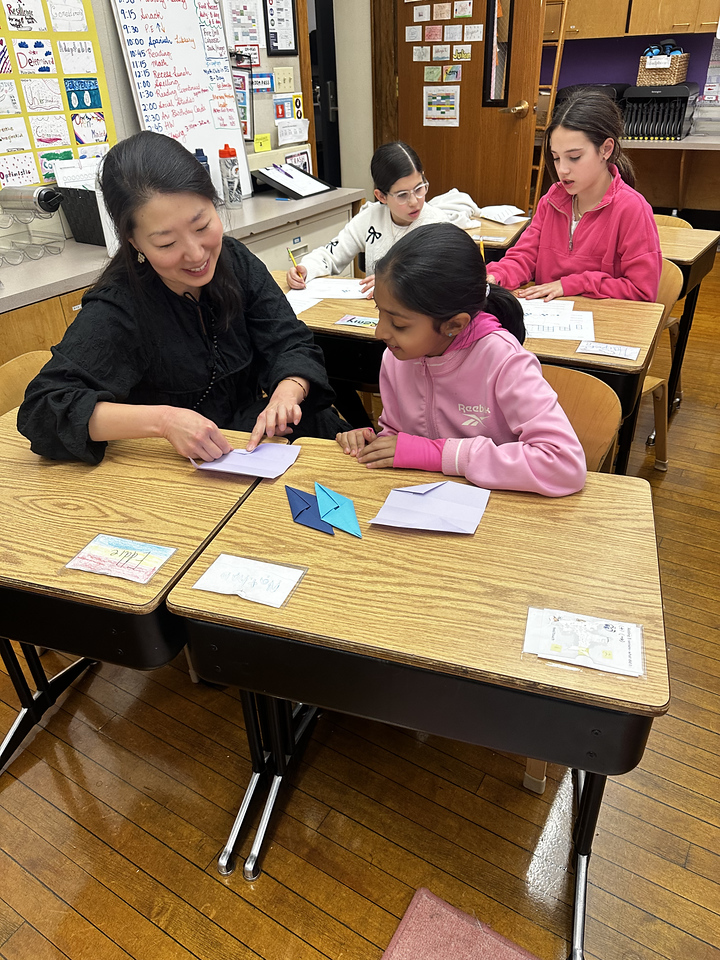
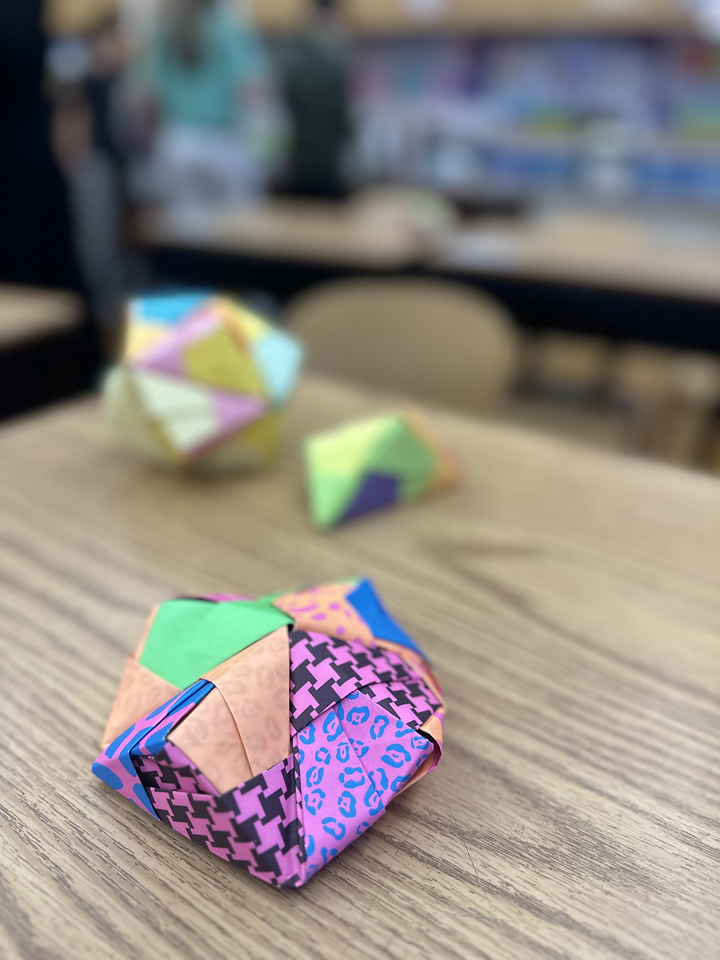
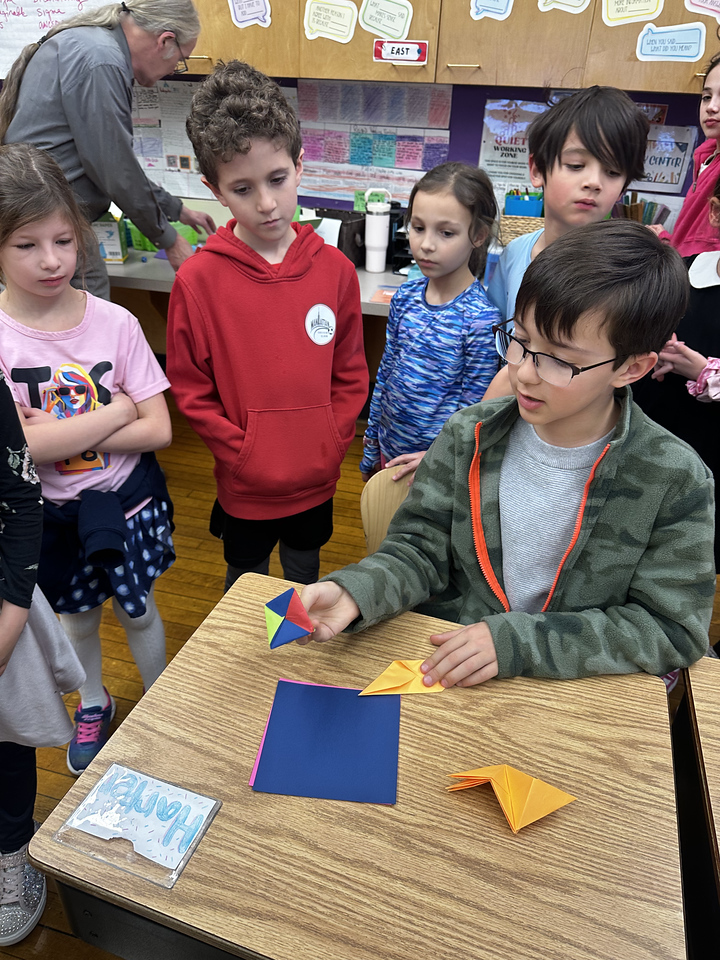
Each year, McMillian invites all 5th Grade students to join the Math Club, an extension of the math program. In Math Club, students engage with topics not typically covered in the 5th Grade curriculum, taking on challenges and deepening their understanding of complex mathematical concepts.
“Math Club is a place where we explore fascinating topics like fractal designs, Möbius strips, and probability,” McMillian explains. “In probability, for example, we investigate the concept of fairness in games by designing games of chance, calculating their probabilities, and presenting our findings at the ‘Is it Fair? Fair.’” This added time spent engaging with math encourages students to reflect, critically analyze, and investigate concepts in depth, embracing an idea central to ECFS’s pedagogy: that learning should challenge students to grow as scholars and citizens. Not to mention, it adds an element of fun!
This year, a club highlight involved exploring three-dimensional geometry by folding Sonobe modules — units used to build modular origami — to create geometric solids like triangular bi-pyramids, cubes, stellated octahedra, icosahedra, and many other forms of the students’ own devising. Students went beyond the instructions, inventing new forms and expanding on the techniques they’d learned. “This work began as a choice-time activity in one classroom and spread, first to the Math Club, and then to students across the grade, becoming something of a 5th Grade fad,” says McMillian.
The math specialists at Ethical Culture teach the necessary concepts that will allow students to progress to more advanced subjects and analyze a problem from multiple perspectives — teaching students not what to think but how to think. “Students visualized their designs and calculated how many modules were needed for new figures based on earlier constructions,” explains McMillian. For example, 5th Graders used their spatial reasoning skills to examine octahedral (8-sided) and icosahedral (20-sided) dice, comparing the arrangement of triangular faces to plan and transform previous creations.
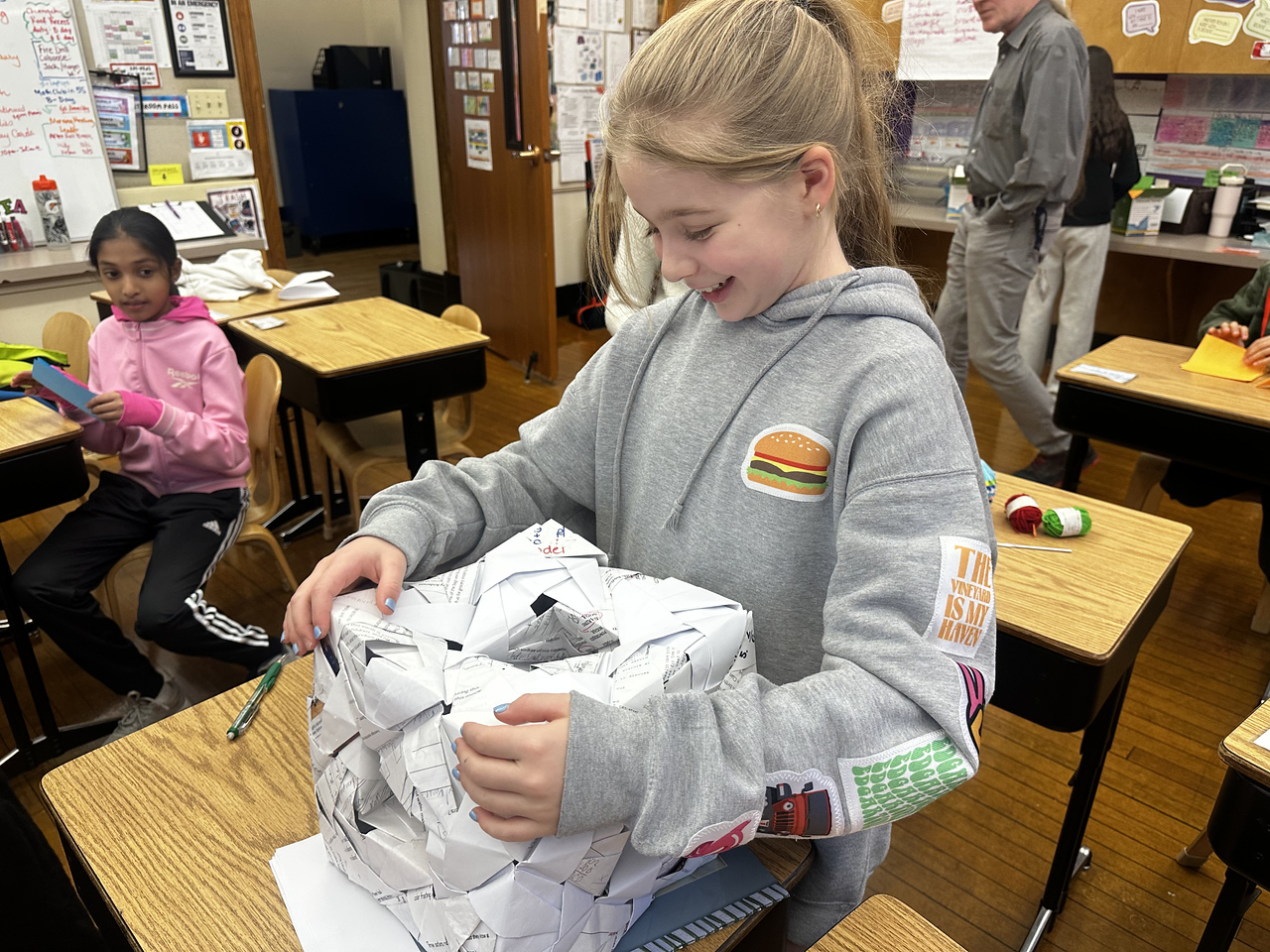
At the 2nd Grade share-out, one student, Maisey R. ’31, proudly displayed a complex cube she had constructed. “How many pieces of paper did you use?” asked one curious 2nd Grader. Maisey paused thoughtfully before replying, “Well, I don’t know the exact number, but using the different sides of the cube, we can estimate pretty accurately.” Her confidence exemplified the power of these projects to make math approachable and exciting.
“Learning by doing is a precept at ECFS, and the 5th Graders showed their commitment to such work this fall,” shares McMillian. “But if you asked them, they would tell you it was for fun.”
